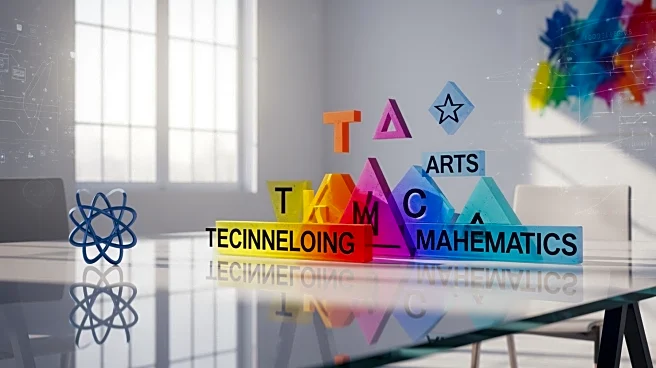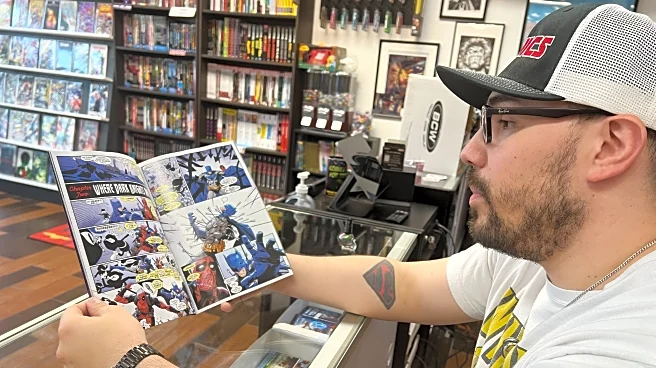What's Happening?
Teachers and librarians are increasingly incorporating comics and graphic novels into educational settings to engage students and foster lifelong reading habits. Educators like Tim Smyth, a high school
social studies teacher, use comics to teach history and current events, allowing students to explore social issues through visual storytelling. Smyth's approach includes analyzing comics from different decades and creating student-generated comics on civil rights topics. Public librarian Heidi Colom utilizes graphic novels to develop vocabulary and decoding skills among ELL patrons, while Liz Blye, a middle school library media specialist, advocates for the validity of graphic novels as a form of reading. These educators highlight the benefits of comics in accommodating diverse learning styles and encouraging critical thinking.
Why It's Important?
The integration of comics and graphic novels in educational settings represents a shift towards more inclusive and engaging teaching methods. By leveraging visual storytelling, educators can cater to diverse learning preferences and make complex subjects more accessible. Comics offer representation and relatability, allowing students to see themselves in the narratives and fostering a sense of belonging. This approach also encourages critical thinking and creativity, as students analyze and create their own comics. The use of graphic novels in education challenges traditional notions of literacy and promotes a broader understanding of reading as a multifaceted skill. As educators continue to embrace these resources, they contribute to a more dynamic and inclusive learning environment.













